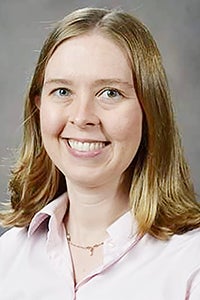Ferguson: Dealing with storm-damaged trees
Published 1:13 pm Friday, September 17, 2021

- Mary Helen Ferguson
|
Getting your Trinity Audio player ready...
|
(Note: This article was contributed by my colleague, Dr. Heather Kirk-Ballard. Heather is the LSU AgCenter Extension Specialist for Consumer Horticulture).
There’s a great deal of work to be done after a storm. High winds from hurricanes can cause broken or split branches, fallen limbs or sometimes uprooted trees. Downed limbs need to be cut into smaller pieces and either used for wood fuel or taken to the curb. In some cases, entire trees need to be taken out.
After the storm, you to first have to figure out what type of damage your tree has incurred. Your initial survey should determine if A, it’s a goner, or B, it’s a keeper. If major limbs or the tree’s central main branch is damaged or down completely, you’ve likely lost your tree. Major damage like this makes it very difficult for the tree to recover. Large wounds will take a long time to heal.
In some cases, it is possible the tree will survive, but it will be definitely be majorly stunted in addition to being a major target for insect pests and disease.
If the tree lost more than half of its branches, it’s going to have a tough time of recovery. With less than half of the leaf coverage, it will have a difficult time producing the necessary energy for survival. If the tree is valuable and not a major threat to surrounding structures, you may leave it alone, and it could possibly live a few more years or even recover with TLC.
If you have a goner on your hands, it’s best to remove the tree. If the work requires a ladder or the use of an overhead or one-handed chainsaw, call a state-licensed arborist. Visit the Louisiana Department of Agriculture and Forestry website at ldaf.state.la.us for a list of licensed arborists in each parish. It is best to work with licensed and bonded arborists when taking down trees, especially in urban areas.
If you have a keeper, follow these steps to ensure the best care for your damaged tree. Start by assessing the damage in detail and begin by removing broken limbs and pruning broken branches. Next, clean torn areas with a sharp, clean knife or ax, leaving as much bark as possible to help the wound-repair process.
If trees are uprooted or leaning, straighten and stake them to reset and help reestablish roots. The chances of survival are best when one-third to one-half of the roots are still in the soil and the remaining exposed roots are relatively undisturbed.
Remove a small portion of the soil from beneath the exposed root mass and reset roots so they will be below the existing soil grade level. Pull the tree upright and fill in soil as needed. Water the tree and gently step on the soil area surrounding the trunk to help firm the soil and remove air pockets.
Next, attach three guy lines to the trunk at about two-thirds of the height of the tree. Anchor them with stakes at an angle, placing them 12 to 15 feet from the base of the tree and secure the lines.
Use straps, cord or rope materials and metal or hardwood stakes. Wrap cables with cloth, rubber hose or some other soft material to prevent further damage to the bark.
Give the tree six or more months to recover, and remove the supports within one year. It’s best not to fertilize the first year after resetting. If you want to fertilize in a later season, greatly reduce your typical fertilizer application by more than a half for one year.
Irrigate as you would any newly planted tree to encourage new root growth. Irrigate deeply for the next one to two weeks after resetting, watering every other day or daily, depending on the temperature. Cooler temperatures require less irrigation. You can continue to water newly set trees a couple times a week for the next three to six weeks. Finally, apply two to four inches of mulch to help reduce weeds, conserve moisture and insulate the roots from hot and cold temperatures.
Dr. Mary Helen Ferguson is an Associate Extension Agent with the LSU AgCenter, with horticulture responsibilities in Washington and Tangipahoa Parishes. Contact Mary Helen at mhferguson@agcenter.lsu.edu, 985-839-7855 (Franklinton) or 985-277-1850 (Hammond).




